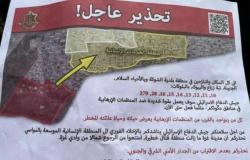Evacuation of civilians, targeted incursions, an advance through the suburbs, control of the corridor that unites the Gaza Strip and Egypt and the securing of the center and north of the Palestinian exclave. Israel appears to have outlined the final plan for the attack on Rafah: the stronghold of the last four Hamas battalions. And barricaded between tunnels and buildings, hidden among two million civilians and with the hostages still alive in their hands, the Palestinian militiamen await the showdown. So much so that the spokesman for the al Qassam brigades, Abu Obeida, said that time for an agreement was running out, inviting “the masses of the Arab nations to support the resistance”. The assault on the city south of the Strip seems like a matter of days, if not weeks. Satellite photos obtained by AFP confirmed the work to set up a tent city in the Khan Younis area, where the Palestinians accuse the Israeli army of having buried the corpses in mass graves (an accusation denied by the Tsahal commands). The IDF said it was not involved in the construction of the new refugee camp, so much so that the Haaretz newspaper reported that Egypt could be behind it. But in any case, for analysts there is no doubt: those tents are intended for refugees fleeing from Rafah. The acceleration of the siege had also been confirmed in recent days by Israeli and Egyptian officials interviewed by the Wall Street Journal, who had confirmed the work in view of the evacuation of civilians. According to the newspaper’s sources, the Israeli army will need about three weeks. And all this will happen in coordination with the Arab partners, Egypt and above all the United States, who fear a humanitarian disaster and have asked for a detailed plan to protect the population involved. Israel’s goal is to reach the final battle with the greatest number of civilians evacuated.
Iran unveils a new weapon capable of eliminating American stealth jets: this is what the Bavar-373 are
THE MOSUL MODEL
A multi-wave siege, which according to the US military interviewed by the New York Times should take as a model the liberation of Mosul in 2017, when international and Iraqi forces engaged in an all-out fight against the Islamic State, but not before having evacuated a million inhabitants. A battle certainly not without collateral victims. According to the Associated Press, around nine thousand people died during the siege, including three thousand, according to some observers, under the bombs of the anti-Daesh coalition. But at the same time, before the battle, Washington and Baghdad managed to secure a million people, preventing them from being trapped in the showdown with the Caliphate. And it is on this point that the US has been clear from the beginning in discussions with the Israelis to decide the fate of Rafah. Talks continued until last week. Netanyahu knows that he must avoid missteps. The eye of US President Joe Biden monitors his ally’s every move.
CONTINUOUS ATTACKS
The other fronts are seething, especially that of Lebanon, where the killing of a senior commander of the Radwan has unleashed a heavy launch of drones and missiles by Hezbollah, which in turn was hit by Israeli raids. For a few days, IDF planes have resumed pounding the Rafah area with greater intensity. Raids which according to Save the Children have caused the death of 21 minors in the last three days. Last night, Israeli jets bombed ready-to-use Hamas rocket launchers. And while the Nahal Brigade continued its operations in the central part of the Strip, along the Netzarim Corridor, to the north (where another soldier was killed) the IDF ordered the eviction of some areas of Beit Lahia in view of new clashes . For Hamas, Israel is “stuck in the sands of Gaza.” But Netanyahu knows that Israeli public opinion wants a result against the militia and above all on the release of the hostages. On Monday evening, protesters symbolically set fire to a table in front of the prime minister’s residence in Caesarea. And yesterday, for the 200 days of imprisonment of their loved ones, the relatives of the hostages and supporters of the cause took to the streets again in Tel Aviv. The “calm” over Iran’s attack is over. And Netanyahu, who must see opposition leader Yair Lapid today, knows that he must resolve the Rafah issue as soon as possible.
© ALL RIGHTS RESERVED






